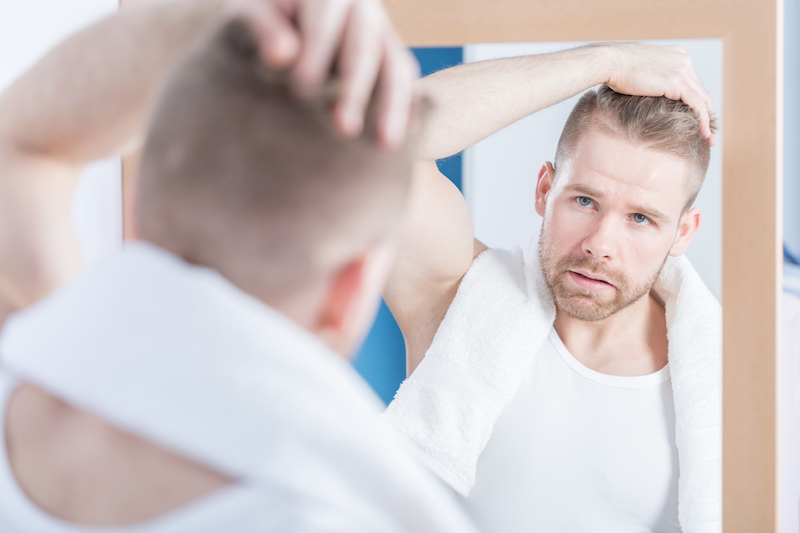Stemming the Tide
By Kari Richardson
Appears in the April 2018 issue.

Two-thirds of American men are already experiencing some degree of hair loss by age 35, according to information from the American Hair Loss Association. By age 50, some 85 percent of men have significantly thinning hair, it reports.
While some men boldly embrace “bald is beautiful,” following in the footsteps of celebrities such as Bruce Willis, Michael Jordan and Duane “the Rock” Johnson, others aren’t ready to give up on the idea of a full head of hair.
And men aren’t alone: Women also experience hair loss and thinning. For all of these individuals, a treatment known as platelet-rich plasma therapy (PRP) may offer hope. Doctors first began using PRP more than a decade ago to speed up the healing process in injured joints. More recently, it has been embraced by local medical practices as a nonsurgical treatment for regrowing hair.
How does platelet-rich plasma therapy work?
A patient’s blood is drawn and spun in a centrifuge to separate the plasma—the liquid component of blood—from red and white blood cells. At the same appointment, the plasma is then injected into areas of the scalp where hair is thinning. There, it can help repair blood vessels and promote hair growth by lengthening the growing phase of the hair cycle.
Dr. Narendra Garg, an internal medicine specialist with Chicagoland Aesthetics, compares the process to aerating a garden. “The [injected material] acts like fertilizer,” Garg says. “The follicles come back to life, become active and start producing better-quality hair.”
For those who are unable to tolerate prescription drug treatments, it may offer an alternative, says Paula Overstreet, a nurse practitioner with Blue Seas Med Spa in Naperville. “PRP is an excellent choice for people who are nervous about taking drugs for hair loss or who have a history of allergic reactions,” Overstreet says. “With PRP, there’s nothing to react to because we are using your own blood.”
Who are the best candidates?
Dr. Jessie Cheung, a dermatologist who treats patients for hair loss at DuPage Dermatology and Aesthetics in Willowbrook, sees both male and female patients from a variety of age groups.
Women, too, can experience hair loss as they age, Cheung says—although it typically looks different than it does in men. “Women tend to develop a bald spot at the crown of their head, while men’s hair tends to recede,” she says.
Regardless of gender, the ideal patient is someone whose hair loss is relatively recent and who is experiencing hair thinning instead of large bald patches. PRP is good at stimulating dormant hair follicles, but less successful at turning on follicles that haven’t been working for years, Overstreet says.
“You are trying to wake up a hair follicle that’s gone to sleep and normally wouldn’t wake back up,” she says.
What can patients expect during treatment?
Since the scalp can be a sensitive area for people, some practitioners use a numbing agent to quiet what Dr. Garg describes as an “annoying sensation” from the needle pokes.
Cheung’s office uses laughing gas or nitrous oxide to relax patients.
Other patients require no numbing at all, Overstreet says. “We have options for people, but most aren’t too bothered and find it goes really quickly.”
It takes most patients three to four months—and three or more treatments—to notice results. Follow-up treatments may also be required, depending on the person’s age and medical reason for the hair loss.
Treatment cost ranges from $600 to $1,200 per session, with some local offices offering discounts for multiple procedures. But take note: Because the procedure is cosmetic in nature, insurance typically does not cover it.


